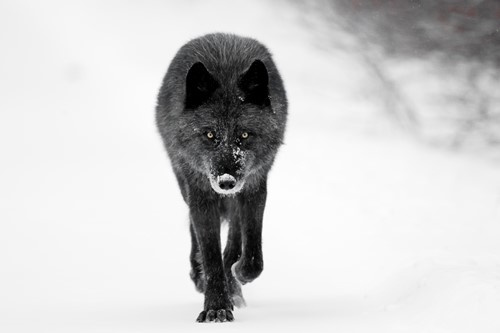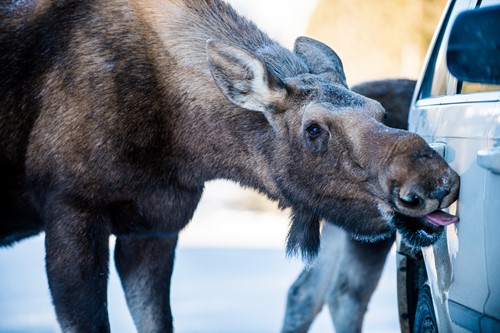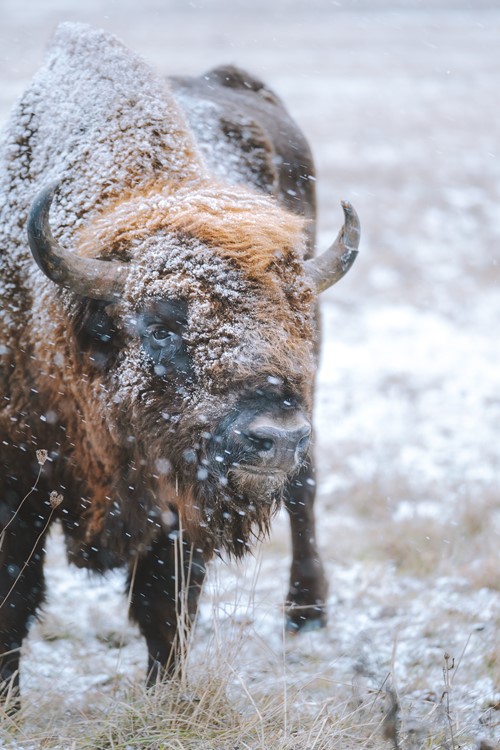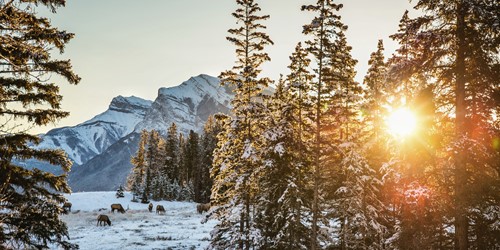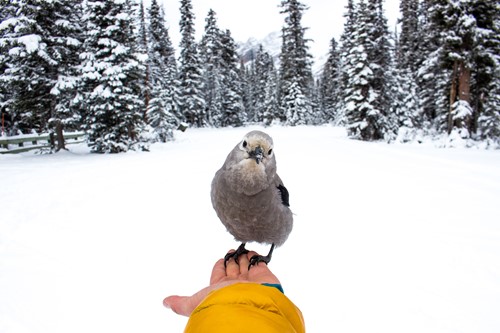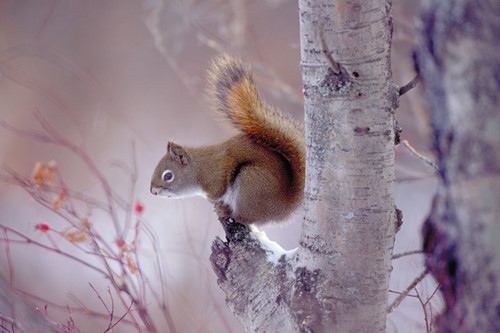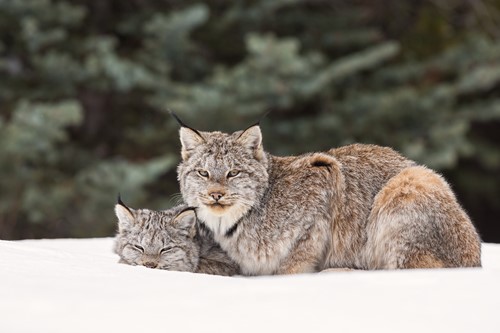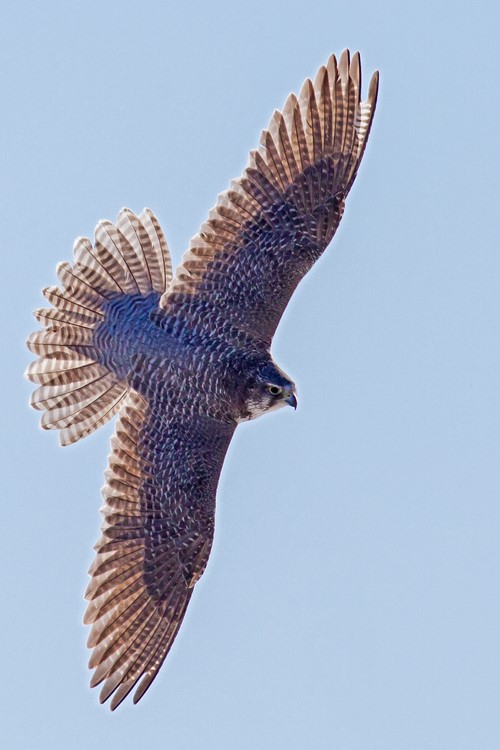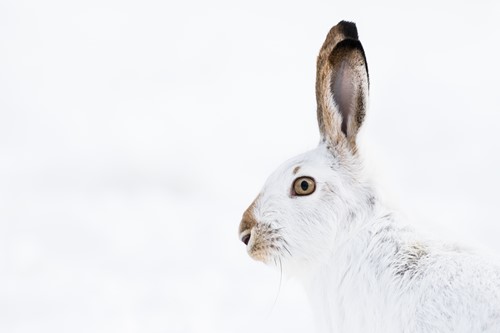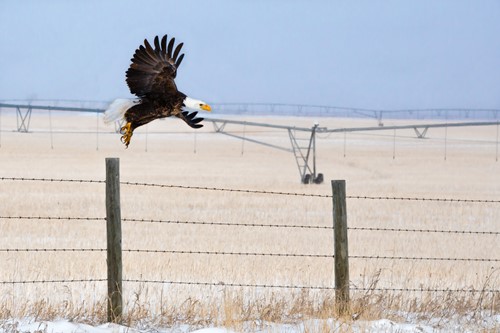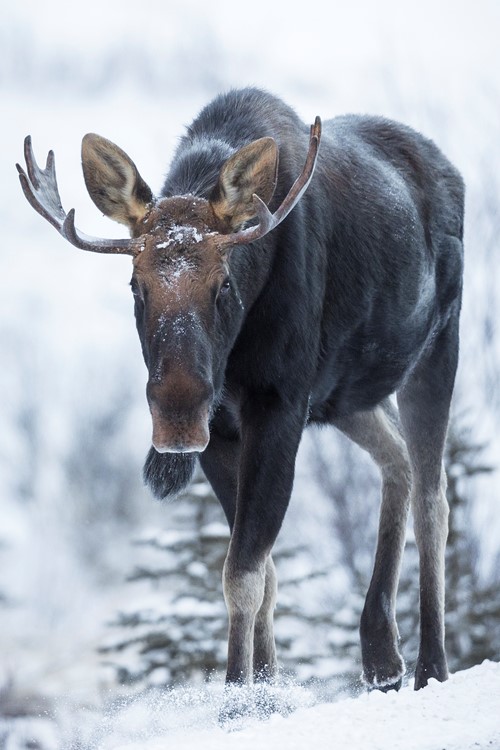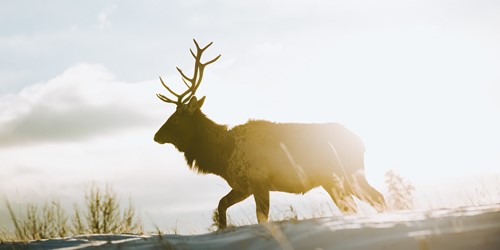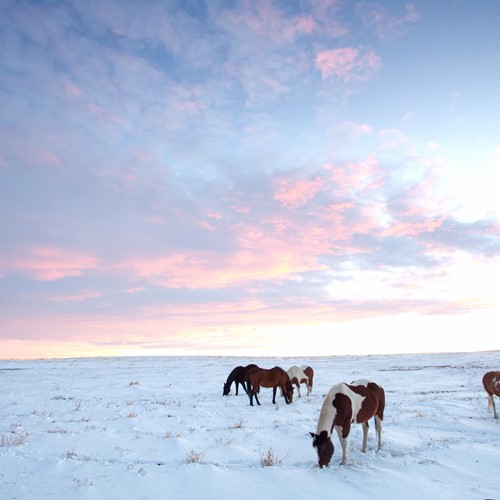Winter Wildlife In Banff And Lake Louise
From Autumn through winter and into Spring is strangely one of the best times to see wildlife in Banff National Park. Whilst some animals hibernate others come down from the upper reaches of the mountains to the valley floor in the colder months, making it easier to spot them. The frozen landscapes around the park make for some spectacular sights in its own right and spotting wild animals only adds to the appeal. Whilst animal sightings can be down to luck, being in the right place at the right time certainly helps and the beautiful surroundings won't leave you disappointed even if you miss the marmots.
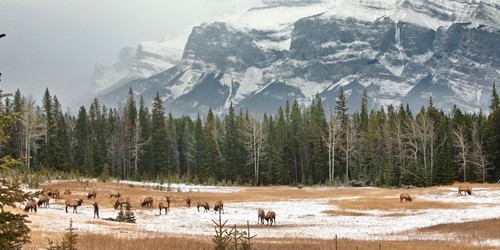
When is the best time to see animals during winter?
Early risers will be rewarded in Alberta. At dawn or shortly afterwards is the best time to see wildlife in the mountains as it's the time most animals come out to feed.
Just before sunset is another prime time if you're not one for early starts.
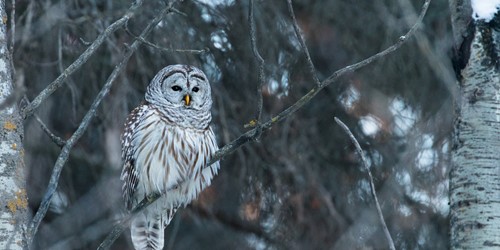
Where is the best place to spot wildlife?
As you would imagine it's the quieter spots with the least human traffic that give you the best chance of spotting wildlife. Try the lesser travelled roads and lakes to maximise your chances.
The Bow Valley Parkway is a lesser travelled road to try out but there are plenty of spots around the park. Try a guided tour for their local knowledge - Banff Tours is a great place to start.
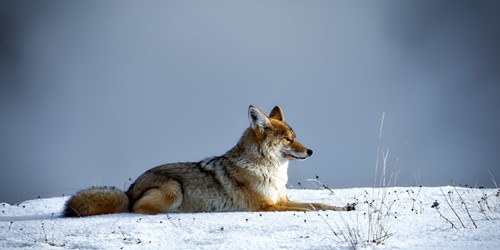
Can I touch the animals?
Absolutely not. You almost definitely won't be able to but you certainly shouldn't even attempt it. These are wild animals and can be dangerous when provoked. The Elk might look cute but may be threatened and unpredictable when provoked.
Keep a safe distance and observe rather that intrude.
What animals can you see during the winter?
The skiing in Banff and Lake Louise may well be what you flew here for but the local wildlife is a mesmerising added bonus. Certain animals are a lot more common to see than others, here we outline those you're most likely to come across as well as some of the rarer spots.
You are in a national park, so wildlife is one of the big focus points after all. There are even wildlife bridges that cross the major roads to allow safe passage of animals between different areas of the park dissected by roads. Whilst the quieter areas are more popular for animals it's not uncommon to spot elk and deer around the towns - another world indeed.
Elk
Rarity: common
Also called wapiti are one of the largest species of the deer family. Rather majestic looking with huge horns that can grow up to four feet in length. Their rutting (mating) season is in autumn so you can spot them butting antlers and by the end of winter the, males will be shedding the same antlers.
You'd be hard pressed not to spot an elk when staying in Banff or Lake Louise.
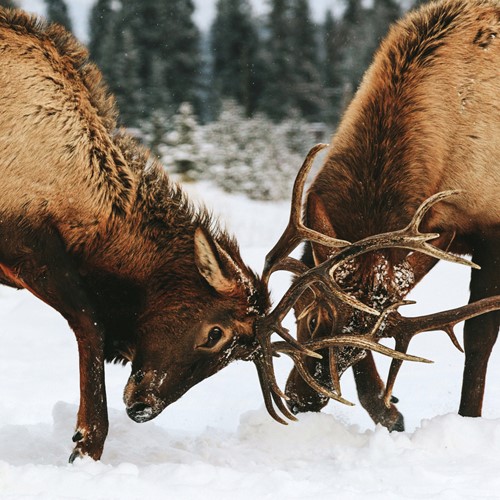
Bighorn sheep
Rarity: common
Often confused as mountain goats (these are certainly not the same), bighorn sheep are among the best climbers in the park. Huge curved horns (which can weigh up to 13 kilos) adorn the males whilst the females have shorter narrow horns.
Often spotted on the higher ground, they are also known to cause traffic jams by crossing the roads in large herds.

Deer
Rarity: common
The only animal that is more common than elk around Banff town. Most likely to be mule deer - demarked with a white rear, giant ears and a light brown/grey colour.
They tend to hang out around the valley bottom. If you see deer with a white underside then these are the white-tailed deer which are slightly less common.
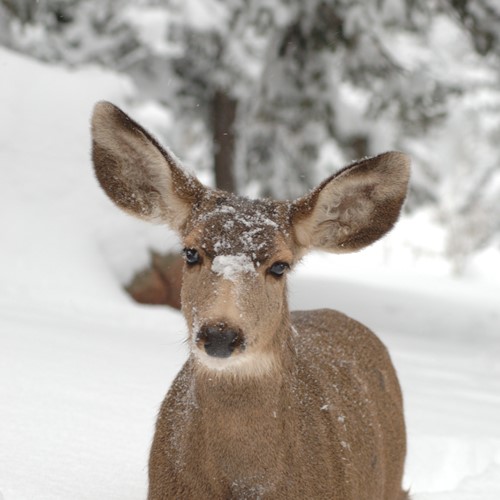
Moose
Rarity: rare
The largest of the deer family, moose are pretty goofy looking and often solitary animals. Long legs and a hump above the front legs, moose have a long face and are pretty ungainly but arguably the most Canadian of animals - possibly for this very reason.
They love the wetlands but their numbers have declined in recent years. Being the size of a horse they're hard to miss if you do come across one.

Coyote
Rarity: rare
Coyotes are actually medium sized dogs that look particularly fox-ish with a thin face, bushy tail and pointed ears. Whatever you do, don't try to stroke them. They're known as tricksters in North American folk tales and it's easy to see why.
Mainly scavengers, they often scout out the roads in search of road kills.

Mountain goat
Rarity: rarer than they should be
Whilst quite numerous in the park, mountain goats are pretty hard to spot due to their prefered habitats being rugged and remote. That said, they are spotted from time to time with a distinctive all-white coat, beard and short back horns mainly on steep rocky terrain.
Mt. Fairview by Lake Louise is one of the best places to spot mountain goats.

Bison
Rarity: very rare
Ok, so bison on roam in a very remote area of Banff National Park so it's unlikely you'll see them. However, they're worth mentioning if only for their incredible story. After an absence of 140 years, bison were re-introduced to the national park in 2017 and a herd of over 30 now roam the park after an introduction of just 16.
So far it's a success story but the studying is still in progress - this is history in the making.
And there's plenty more wildlife...
This is by no means an exhaustive list as Banff National Park is home to 53 species of mammals alone.
There's a spectacular array of wildlife here; birds such as clark's nutcrackers, falcons and white-tailed ptarmigans. Wolves prowl the park but are incredibly rare to see, as are lynx, wolverines and mountain lions. And when it comes to smaller animals there's still plenty to see from porcupines, marmots, pika, pine martens and chipmunks to more common in England animals such as rabbits and squirrels. There are beavers, though they are far less active during the winter. Bears are the largest animals in the park but they hibernate over the winter months so you won't see any unless you visit at the very last grips of the ski season.
The most endangered species in the park is actually one of the smallest in the Banff Springs snail. As the name suggests this is the only place in the world you can find them and they thrive in the hot springs on Sulphur Mountain - they indicate good health to the thermal waters.
Banff winter wildlife gallery:
